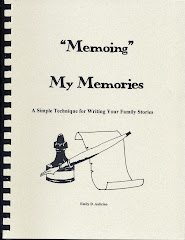Edit Is a Four Letter Word, con't
The letter D is for:
Draft as many versions as needed for clarity
Part 2: Edit by Rearranging
Unity
Often a story must be rearranged in order to create a harmony, a unity within itself. Everything aspect must blend and every area must not go beyond the intended focus. This step in revising your draft looks at the unity of individual aspects of writing. Before you begin, you need to review the purpose and direction of your writing. What is your goal for this piece? What is the focus? What message are you trying to convey?
The following areas must agree; they must be consistent throughout your writing.
1. Subject matter – Did you stay on subject or go beyond it?
2. Scope – Have you omitted some areas of your topic or have you stayed within the guidelines of your focus? Working from an outline could help keep you organized.
3. Tone – Does your story have a mood, an attitude which is consistent throughout the piece? Can the reader determine easily that your story is serious, sad, humorous, etc.?
4. Style – Does your style shine? Does the style of writing remain the same voice to the end?
5. Point of View – Did you switch point of view?
6. Characterization – Did you develop believable characters with realistic actions?
7. Scene – Do you move your reader through various scenes with ease? Do your characters interact with the scenery as needed, and is that scenery developed?
8. Tense – Are the verbs in the same tense or if there’s a reason to have different tenses, have you kept them in proper sequence. That is, if a subordinate action happens before the main action, the subordinate action must be in the past tense.
9. Sentences and Paragraphs – Does each sentence deal with similar ideas? If the ideas are distinctively different the sentences are not unified. For a unified paragraph the sentences must be related to the paragraph’s topic and be in a coherent sequence.
Coherence
A coherent story is a combination of logic and form and deals with putting the various elements of your writing in good order. This includes the sequencing of words into sentences, sentences into paragraphs, paragraphs into chapters, etc.
The major methods for organizing are chronological, spatial, and from general to specific. In using chronological sequencing, decide whether your story is best told from past to the present, present to future, or present backward to the past? Or should you start in the middle, then go back and then forward? Descriptive passages are usually best suited for spatial logic. The author should move the reader’s eye in a logical sequence such as from left to right, up to down, etc. when describing a scene. When using general to specific organization or vice-versa maintain this order throughout the story. Choose the method that best fits your story and maintain its unity throughout.
All references need to be unambiguous for the writing to be coherent. You must not lose the reader through confusion. Be careful of sentences that begin with pronouns. Does the previous sentence clarify to whom or what the pronoun refers? Refrain from using multiple pronouns in a sentence as the reader may become confused as to who did what.
Be certain that phrases are in their correct places. Check any sentence with multiple pieces by moving the phrases around to make the meaning clear.
Original:
The keypunch operator incorrectly punched in a program, which created a power failure in the building where she worked for two days.
Revised:
…which created a power failure for two days in the building where she worked.2.
Smooth transitions between ideas in sentences as well as between paragraphs are important for clear understanding. When there are several ideas are of equal importance, the sentence needs a parallel structure.
Original:
She had never gone to a part alone, much less an event like this.
Revised:
She had never gone alone to a party much less to an event like this.
Original:
Readers appreciate your getting to the heart of a matter in a hurry, rather than being forced to red through paragraphs or pages to find it.
Revised:
Readers appreciate your getting to the heart of a matter in a hurry, rather than forcing them to read though…
Original:
We can attack at night or we can do it in the light.
Revised:
We can attack by night or by day.3.
When ideas are not of equal importance, the ideas must not be placed in a parallel form. Some ideas are subordinate to others, and the sentence must clearly indicate that for the reader. For these types of sentences it is best to use one of three logical orders.
1. Time – Lay out the events in the order they occurred.
2. Relationship – Show cause and effect as needed. Time order often reflects the relationship between events.
In the following example, the order of time is used. However, this sentence also shows the order of relationship…a cause and effect.
After the storm abated, I went below. Because the porthole had opened during the storm, damage to the crew’s quarters was severe.4.
3. Emphasis – Place the most important event first to emphasize its significance.
After the storm, I went down below. The crew’s quarters were severely damaged—the porthole had opened during the storm. This, after I had just conducted a storm rill in which Howard had been permanently assigned to dog down that particular porthole.
The above example does place the focus on the open porthole rather than on the storm. For this reason, the author must be wise in selecting the type of order that best fits the focus of the writing.
Smooth transitions
One of the easiest ways to have smooth transitions between sentences is to repeat a key word or a key thought from the previous sentence. Sometimes you may wish to use a synonym, but sometimes the same word works best.
Although there are some trite phrases commonly used for transitions between paragraphs, the same technique of repeating a word or phrase used with sentences can be used with paragraphs. Often the key word, phrase, or idea in the final sentence may be repeated or restructured to use in the first sentence of the next paragraph.
Another type of transition is the one between scenes. Often the author can move the reader from one scene to another with a few simple words.
Example:
Marge sat in the den at the computer, busily typing as the wind howled. Soon creaking sounds began to intensify. She ran to the windows to see what tree was soon to be history.
Next door, the McGill’s peered from their window, gasping in unison as a huge branch from the elm just missed their house.
As you can see the words next door moved the scene from one location to the next with ease.
Another method is to leave extra line of space between paragraphs indicating that extra time has passed and, therefore, a change of scene.
In some cases, the author may choose to use the last sentence of a paragraph to change the scene rather than the first sentence of the next paragraph. Sometimes, the author may only hint at a change of scene in the last sentence. This would be done to continue the rising flow of excitement.
Example:
Bent over the desk for hours, I had managed to block out the sound of the furnace starting and stopping and the creaks of the old house while trying to focus on my writing. I was under a deadline, and the pressure was mounting when…brrr-inggg! Dang, the phone!
I raced to the living room to quiet the monster, tripping on the kids' toys….
The phone ringing indicates an immediate change of scene, whether the phone is in the same room or another.
All parts of the story must be coherent, including the beginning, middle and end. Check your story to see if it flows well between these major elements. The plot is usually hinted at in the beginning and then is developed in the middle. Here the conflict becomes apparent to the point of crisis. The ending provides the resolution of the conflict and ties up any loose ends.
Remember: Although editing is a difficult and lengthy task, you will develop skills that will improve your writing in the initial stages so editing will become easier. There is much detail here, so take one step at a time. Your readers will love you for the improvements, and you will be proud of your work.
Next, the letter D (part 3 of 3) in that four letter word Edit.
D stands for: Draft as many versions as needed for clarity.
Part 3 covers Edit by Rewording
Source (adapted from):
Cheney, Theodore A. Rees. Getting the Words Right: How to Revice, Edit & Rewrite, Writer’s Digest Books, Cincinnati, OH, 1987.
2. Cheney, p. 59.
3. ibid., p. 64-66.
4. ibid., p. 69.
©Aulicino 5 Dec 2008
The letter D is for:
Draft as many versions as needed for clarity
Part 2: Edit by Rearranging
Unity
Often a story must be rearranged in order to create a harmony, a unity within itself. Everything aspect must blend and every area must not go beyond the intended focus. This step in revising your draft looks at the unity of individual aspects of writing. Before you begin, you need to review the purpose and direction of your writing. What is your goal for this piece? What is the focus? What message are you trying to convey?
The following areas must agree; they must be consistent throughout your writing.
1. Subject matter – Did you stay on subject or go beyond it?
2. Scope – Have you omitted some areas of your topic or have you stayed within the guidelines of your focus? Working from an outline could help keep you organized.
3. Tone – Does your story have a mood, an attitude which is consistent throughout the piece? Can the reader determine easily that your story is serious, sad, humorous, etc.?
4. Style – Does your style shine? Does the style of writing remain the same voice to the end?
5. Point of View – Did you switch point of view?
6. Characterization – Did you develop believable characters with realistic actions?
7. Scene – Do you move your reader through various scenes with ease? Do your characters interact with the scenery as needed, and is that scenery developed?
8. Tense – Are the verbs in the same tense or if there’s a reason to have different tenses, have you kept them in proper sequence. That is, if a subordinate action happens before the main action, the subordinate action must be in the past tense.
9. Sentences and Paragraphs – Does each sentence deal with similar ideas? If the ideas are distinctively different the sentences are not unified. For a unified paragraph the sentences must be related to the paragraph’s topic and be in a coherent sequence.
Coherence
A coherent story is a combination of logic and form and deals with putting the various elements of your writing in good order. This includes the sequencing of words into sentences, sentences into paragraphs, paragraphs into chapters, etc.
The major methods for organizing are chronological, spatial, and from general to specific. In using chronological sequencing, decide whether your story is best told from past to the present, present to future, or present backward to the past? Or should you start in the middle, then go back and then forward? Descriptive passages are usually best suited for spatial logic. The author should move the reader’s eye in a logical sequence such as from left to right, up to down, etc. when describing a scene. When using general to specific organization or vice-versa maintain this order throughout the story. Choose the method that best fits your story and maintain its unity throughout.
All references need to be unambiguous for the writing to be coherent. You must not lose the reader through confusion. Be careful of sentences that begin with pronouns. Does the previous sentence clarify to whom or what the pronoun refers? Refrain from using multiple pronouns in a sentence as the reader may become confused as to who did what.
Be certain that phrases are in their correct places. Check any sentence with multiple pieces by moving the phrases around to make the meaning clear.
Original:
The keypunch operator incorrectly punched in a program, which created a power failure in the building where she worked for two days.
Revised:
…which created a power failure for two days in the building where she worked.2.
Smooth transitions between ideas in sentences as well as between paragraphs are important for clear understanding. When there are several ideas are of equal importance, the sentence needs a parallel structure.
Original:
She had never gone to a part alone, much less an event like this.
Revised:
She had never gone alone to a party much less to an event like this.
Original:
Readers appreciate your getting to the heart of a matter in a hurry, rather than being forced to red through paragraphs or pages to find it.
Revised:
Readers appreciate your getting to the heart of a matter in a hurry, rather than forcing them to read though…
Original:
We can attack at night or we can do it in the light.
Revised:
We can attack by night or by day.3.
When ideas are not of equal importance, the ideas must not be placed in a parallel form. Some ideas are subordinate to others, and the sentence must clearly indicate that for the reader. For these types of sentences it is best to use one of three logical orders.
1. Time – Lay out the events in the order they occurred.
2. Relationship – Show cause and effect as needed. Time order often reflects the relationship between events.
In the following example, the order of time is used. However, this sentence also shows the order of relationship…a cause and effect.
After the storm abated, I went below. Because the porthole had opened during the storm, damage to the crew’s quarters was severe.4.
3. Emphasis – Place the most important event first to emphasize its significance.
After the storm, I went down below. The crew’s quarters were severely damaged—the porthole had opened during the storm. This, after I had just conducted a storm rill in which Howard had been permanently assigned to dog down that particular porthole.
The above example does place the focus on the open porthole rather than on the storm. For this reason, the author must be wise in selecting the type of order that best fits the focus of the writing.
Smooth transitions
One of the easiest ways to have smooth transitions between sentences is to repeat a key word or a key thought from the previous sentence. Sometimes you may wish to use a synonym, but sometimes the same word works best.
Although there are some trite phrases commonly used for transitions between paragraphs, the same technique of repeating a word or phrase used with sentences can be used with paragraphs. Often the key word, phrase, or idea in the final sentence may be repeated or restructured to use in the first sentence of the next paragraph.
Another type of transition is the one between scenes. Often the author can move the reader from one scene to another with a few simple words.
Example:
Marge sat in the den at the computer, busily typing as the wind howled. Soon creaking sounds began to intensify. She ran to the windows to see what tree was soon to be history.
Next door, the McGill’s peered from their window, gasping in unison as a huge branch from the elm just missed their house.
As you can see the words next door moved the scene from one location to the next with ease.
Another method is to leave extra line of space between paragraphs indicating that extra time has passed and, therefore, a change of scene.
In some cases, the author may choose to use the last sentence of a paragraph to change the scene rather than the first sentence of the next paragraph. Sometimes, the author may only hint at a change of scene in the last sentence. This would be done to continue the rising flow of excitement.
Example:
Bent over the desk for hours, I had managed to block out the sound of the furnace starting and stopping and the creaks of the old house while trying to focus on my writing. I was under a deadline, and the pressure was mounting when…brrr-inggg! Dang, the phone!
I raced to the living room to quiet the monster, tripping on the kids' toys….
The phone ringing indicates an immediate change of scene, whether the phone is in the same room or another.
All parts of the story must be coherent, including the beginning, middle and end. Check your story to see if it flows well between these major elements. The plot is usually hinted at in the beginning and then is developed in the middle. Here the conflict becomes apparent to the point of crisis. The ending provides the resolution of the conflict and ties up any loose ends.
Remember: Although editing is a difficult and lengthy task, you will develop skills that will improve your writing in the initial stages so editing will become easier. There is much detail here, so take one step at a time. Your readers will love you for the improvements, and you will be proud of your work.
Next, the letter D (part 3 of 3) in that four letter word Edit.
D stands for: Draft as many versions as needed for clarity.
Part 3 covers Edit by Rewording
Source (adapted from):
Cheney, Theodore A. Rees. Getting the Words Right: How to Revice, Edit & Rewrite, Writer’s Digest Books, Cincinnati, OH, 1987.
2. Cheney, p. 59.
3. ibid., p. 64-66.
4. ibid., p. 69.
©Aulicino 5 Dec 2008








No comments:
Post a Comment